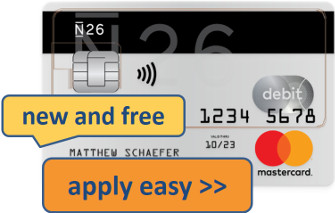International wire transfers
by Christian Funke
In the context with international wire transfers, there are myths, uncertainties and a whole bunch of terms that are not sorted at all. Finally, high costs are created that should not have been necessary.
Without a detailed knowledge, it is difficult to ensure that the receiver gets the exact amount, even if one bears the fees.
Reading this article will be a well-invested time, because you can see all important information gathered on one page. For others, it will be a long, cost and experience-intensive time.
1. SEPA
Let´s take a look at the “SEPA” (Single Euro Payments Area). This includes all countries of the EU + EWR (Iceland, Norway, Liechtenstein) + Switzerland + Monaco + San Marino. (Details in the glossar at the end of this page).
The SEPA-rules determine that a “SEPA compliant transfer” cannot cost more than a comparable domestic wire transfer.
Therefore, such transfers are not free of charge according to the definition, as often claimed. They are only free of charge most of the time, because most bank institutes within the SEPA-area offer domestic wire transfers free of charge.
Do you know exactly what is “SEPA-compliant”?
All of the following requirements must be met:
- The sender´s account must be in any SEPA-country and held in Euros
- The beneficiary´s account must be in any SEPA-country and held in Euros
- IBAN and BIC must be used
- The transfer must be made in Euros
- For cost sharing, “SHA” must be chosen
Cost sharing causes most confusion
At classic international wire transfers, one must choose between “OUR”, “SHA” or “BEN”:
- OUR = sender pays all fees
- SHA = SHAre = sender and beneficiary bear the fees of their own banks
- BEN = BENificiary pays all cost
Many banks now offer a separate SEPA-form, where the “SHA”-fee sharing is already chosen or not even an option.
Some banks, however, choose one and the same (online) form for SEPA-transfers and other international wire transfers. Herein, one has to choose SHA for cost sharing or it will become expensive. (An interpretation of possible reasons for such forms would be exiting, but not target-oriented here) Nevertheless, more and more banks change their procedure for the benefit of the customers.
If all requirements are met, then a wire transfer costs the same as a domestic transfer, which is in most cases “free of charge”.
Negative SEPA-exception!
The short word “comparable” domestic transfer conceils a lot, but is only relevant for “non-Euro-SEPA-countries: if one wire transfers to a “non-Euro-SEPA-country”, e.g. to the United Kingdom, in Euros, then this is quite an exotic foreign currency transaction, which banks love to charge a lot for, and this incoming as well as outgoing!
This Euro-transaction is valid as a SEPA-base and “comparable”. As a result, SEPA-transfers sometimes cost high fees, even if they fulfill all requirements. If one wants to ensure that the exact amount arrives, then one must find out the exact fees in advance.

red/blue = SEPA | blue = Euro-SEPA-country | red = non-Euro-SEPA-country
Positive SEPA-exception
In some “non-Euro-SEPA-countries” (e.g. in Switzerland), the statutory requirement that the account must be held in Euros is not always forced as a requirement for a SEPA-transfer.
The banks often deviate this for the benefit of the customer and permit SEPA-transfers also directly from the non-Euro-account. The bank then exchanges using its own rate, through which it earns quite a lot anyway.
At least, one is not scammed on the part of the fees. To find out how it works, one has to investigate beforehand at every individual bank.
Summary SEPA:
- If one wire transfers from a Euro-SEPA-country to another, then a correctly filled SEPA-transfer is free of charge in most cases, but not mandatorily.
- If the SEPA-transfer concerns at least one non-Euro-SEPA-country, then a correctly filled SEPA-transfer can be free of charge, but is only in rare cases. There are a lot of stumbling blocks.
2. “Normal” international wire transfers
Every international non-SEPA transfer through banks is similar to a gauntlet.
In many cases, being the sender of a wire transfer, one has the desire to pay an invoice or the like. Herein, one wants to enter the exact amount at the beneficiary and possible also state a purpose (invoice number or the like).
The world of banks did not implement these simple specifications at all!
The most frequent problems (and how to avoid them)
- One states a purpose, but it does not appear at the beneficiary. Instead, often cryptic numbers or internal names of foreign departments of the banks are stated in the purpose field, so that the benefiaciary cannot assign the payment.
- One transfers with the cost specification “OUR“, so that the beneficiary should get the whole amount. Nevertheless, it happens that correspondent banks take fees from the wire transfer amount and the beneficiary receives less than intended. In the worst case, one has to make a new (uncertain) international transfer due to the unsufficient amount and pay the fees again.
- In one case known by me, a “small” amount should be transferred, to pay something “small”. The beneficiary was deducted more fees than the actual amount, so that the sender as well as the beneficiary had less money after the transfer. One could add sarcastically: in the end, the sender showed willingsness to pay.
- Although one thinks to comprehend the costs by choosing SHA (one has queried the costs at the own bank and the beneficiary´s bank), unexpected additional costs through correspondent banks arise. Whether these are forwarded to the sender or the beneficiary, is often unclear.
- The duration of such international transfers is completely unpredictable. One thing is sure: nothing is sure.
- If something goes wrong, banks recommend to “investigate“. This costs time, money and the result is uncertain. Although I personally do not know any case in which the money was completely lost, but I have heard of long, nerve-racking procedures quite often.
- Last but not least, there is the exchange rate, which one often finds rather unclear. Frequently, no exchange rate at all is shown. Only the average rate is shown unembarrassed as a “reference” and in the small print, one is indicated that this is not the rate that one will effectively get.
Solution ideas for smart bank customers!
This business segment has been revolutionized by specialized “international payment companies” and have been discussed in other articles here on our special portal. Therefore only some links:
3. Summary of international payments
Three different payments must be distinguished:
- SEPA-payment from one Euro-country to another Euro-country: This can be made most often easily and free of charge through the main bank.
- SEPA-payment, in which at least one non-Euro-country takes part: Investigate for possible fees, otherwise switch to one of the mentioned providers.
- For every non-SEPA international transfer (also between SEPA-countries, but in another currency than Euro), one should take advantage of the mentioned providers due to the mentioned reasons and avoid the main bank.
Abbreviations/Glossar
- SEPA – Single Euro Payment Area
- SEPA-countries: EU + EWR (Iceland, Norway, Liechtenstein) + Switzerland + Monaco + San Marino
- “Non-Euro-SEPA-countries”: all SEPA-countries that did not (yet) implement the € as the currency (Bulgaria, Denmark, Croatia, Poland, Romania, Sweden, Czech Republic, Hungary, United Kingdom, Iceland, Norway, Liechtenstein, Switzerland)
- Noticeable non-SEPA-countries: although allied with the UK: Jersey, Guernsey, Isle of Man; although allied with Denmark: the danish Faroe Islands and Greenland; although the Euro is used as the currency: Kosovo, Montenegro, Andorra and Vatican city
- Noticeable “although” SEPA-country: Gibraltar
- IBAN – International Bank Account Number (account number)
- BIC – Business Identifier Code (bank code)
- OUR, BEN, SHA – the cost specification types are explained in the article
About the author

Christian Funke has tested many accounts and cards in his life and is constantly interested in developing optimal solutions for different bank customer needs.
For example, how one can combine a bank account with a credit card and a cheap international wire transfer.
However, also exotic bank ideas appear in his life, such as his experience and published instructions on how one can open a bank account in Singapore.
Frequently read articles:
- Transfer cheaply to the USA (TransferWise)
- Incoming international transfers are always free of charge: ING-DiBa
- German credit cards without foreign transaction fee












Leave a Reply